RQA Indicator Spotlight: the Flattening yield curve
In this month's analysis of economic data, we turn our attention to recent developments in interest rates within the United States. Specifically, we delve into the yields on U.S. Treasuries spanning various terms, commonly referred to as the yield curve or term structure.
Throughout the month, there have been recurring headlines concerning the continuous upward movement of interest rates in the U.S., particularly at the longer end of the spectrum for U.S. Treasuries. Notably, the rise in yields has transpired mainly across longer-dated treasuries (10 years plus), while interest rates on the shorter end of the curve (less than 2 years) remained relatively steady, resulting in a process often described as a normalization of the yield curve.
Source: Analysis by RQA. Data from U.S. Federal Reserve;
This phenomenon on the back end of the curve is unfolding as the Federal Reserve's policy direction, often summarized as "higher for longer," firmly establishes itself among market participants. The normalization of the yield curve reflects a transition toward a "flatter" yield curve, edging the interest rate term structure closer to the more typical positive slope, where longer-dated treasuries yield the same or more than their shorter-dated counterparts. The rationale behind the upward-sloping yield curve is intuitive, as issuers, in this case the U.S. government, would logically compensate investors more for committing their capital for more extended periods.
As the yield curve has flattened over the past few months, this shift also signifies the reversal of a previous inversion in the yield curve, which we have closely monitored and discussed in previous updates given its track record as a recession forecasting indicator.
It’s important to note, that in prior periods when the yield curve inverted and then subsequently normalized (or became un-inverted), there has been a tendency for economic growth to be more sluggish or even decline over the near-to-medium term. Given the lag of this type of indicator, we will want to monitor when we get fully un-inverted and how the overall growth model performs over the next 6-9 months.
In summary, by juxtaposing the insights from the Treasury market with the latest readings from our economic forecast model, we gain valuable perspectives on the potential trajectory of economic growth in the U.S.
Economic Forecast Model
The RQA Economic Forecast Model experienced a positive shift higher to 0.35 in September, up from 0.05 at the end of August. Given this latest move higher, we are starting to see more of a positive trend develop in the model, providing incremental optimism around potential fundamental economic growth expectations in the near-to-medium term. These readings remain fairly close to the zero-line, meaning the full line-up of leading indicators driving our forecasts remains somewhat mixed - but, positive trends in the model are certainly more welcomed than the reverse, especially as conflicting signals may be coming from the yield curve dynamics mentioned previously.
Source: Analysis by RQA. Data from U.S. Federal Reserve; Bureau of Labor Statistics; Norgate Premium Data; Institute for Supply Management
The RQA Economic Forecast Model represents a consolidated composite of key economic leading indicators and market-based explanatory variables. The goal of this composite model is to present a holistic measure of primary U.S. economic growth drivers and their trends over time. (Additional detail on the model’s construction is provided here.)
Values above the zero-line are indicative of positive U.S. economic growth expectations in the near-term, and therefore, indicate economic strength and lesser chance of recessionary pressure. On the other hand, values below the zero-line represent the opposite - a more negative outlook and more elevated probabilities of the U.S. experiencing an economic contraction.
TAKING A CLOSER LOOK AT THE ECONOMIC DRIVERS
In the economic heatmap below, we are able to peak under the hood at a wide mix of underlying growth drivers in the U.S. economy. By reviewing this underlying data in more detail, we are better able to see how the underlying components of the U.S. economic growth picture are behaving through time. The indicators presented below have each proven to have predictive qualities in estimating the future direction of U.S. economic growth.
Source: Analysis by RQA. Data from U.S. Federal Reserve; Bureau of Labor Statistics; Norgate Premium Data; Institute for Supply Management
In assessing the various metrics tracked by our economic forecast model, the key takeaways for the quarter are as follows:
The U.S. labor market remains resilient, as non-farm payrolls continue to increase year-over-year, and the overall rate of unemployment remains near historic lows, despite some negative trends in recent months.
There remains to be a dichotomy between the U.S. goods economy (manufacturing/industrial production) and the services economy, as can be seen in the divergence between the ISM Services PMI trends and the rates of change exhibited by ISM Manufacturing PMIs and the Industrial Production Index. It is important to note that the majority of true U.S. economic expansion periods have seen positive trends across both goods and services sectors, so the lack of confirmation between the two continues to indicate that we aren’t quite back on the robust path to economic upside just yet.
Income and consumption data also continued to exhibit positive trends overall, with the exception of retail sales, further highlighting the underpinnings of strength in more services-oriented spending as compared to goods-oriented and retail spending.
When looking at the sentiment and market-based explanatory variables, we continue to see longer-term optimism being projected through the strength of U.S. equity market performance and consumer sentiment readings. Moreover, in recent months, corporate bond spreads have improved (i.e., narrowed year-over-year), indicating that bond market participants are becoming less concerned about the marginal levels of credit risk on their bonds.
Lastly, as noted in this post’s Spotlight, longer-dated Treasury yields rose fairly dramatically in September, causing the yield curve (10-yr minus 2-yr) to flatten from its persistently inverted position. It’s important to note that a reversion back to a flat or positively sloping yield curve tends to indicate a healthier environment for the economy and financial markets; however, most U.S. economic recessions that were preceded by inverted yield curves also saw these inversions normalize back to flat/positive conditions before the coming recession officially started.
MARKET REGIME DISCUSSION
Amid the recent surge in interest rates on the back end of the yield curve, the Federal Reserve chose to refrain from raising the key interest rate during the September meeting. Expectations have now shifted towards a pause in rate cuts as the year draws to a close. Both Fed officials and many market participants share the view that the approximately 100 basis point (1%) increase in long-term rates over the recent term has essentially functioned as an additional rate hike for certain sectors of the economy that are particularly sensitive to interest rate fluctuations.
As the economic growth forecast gains momentum heading into year-end and companies continue to digest earnings reports, close attention will be paid to the market segments that are more susceptible to interest rate movements. The increase in rates could have implications for profit margins and overall growth prospects in these areas. With prevailing trends remaining consistent in labor markets and consumer well-being, the Fed continues to signal their comfort with the current interest rate environment.
Although recent trends have seen some moderation in overall inflation levels following multi-month declines, it's important to note that overall inflation levels remain moderately elevated compared to long-term historical norms and the ideal levels outlined in the Fed's mandate. When we consider this in conjunction with the near-term forecast suggesting a potential uptick in economic growth, it points us toward the quadrant characterized as an inflationary boom.
Source: RQA.






